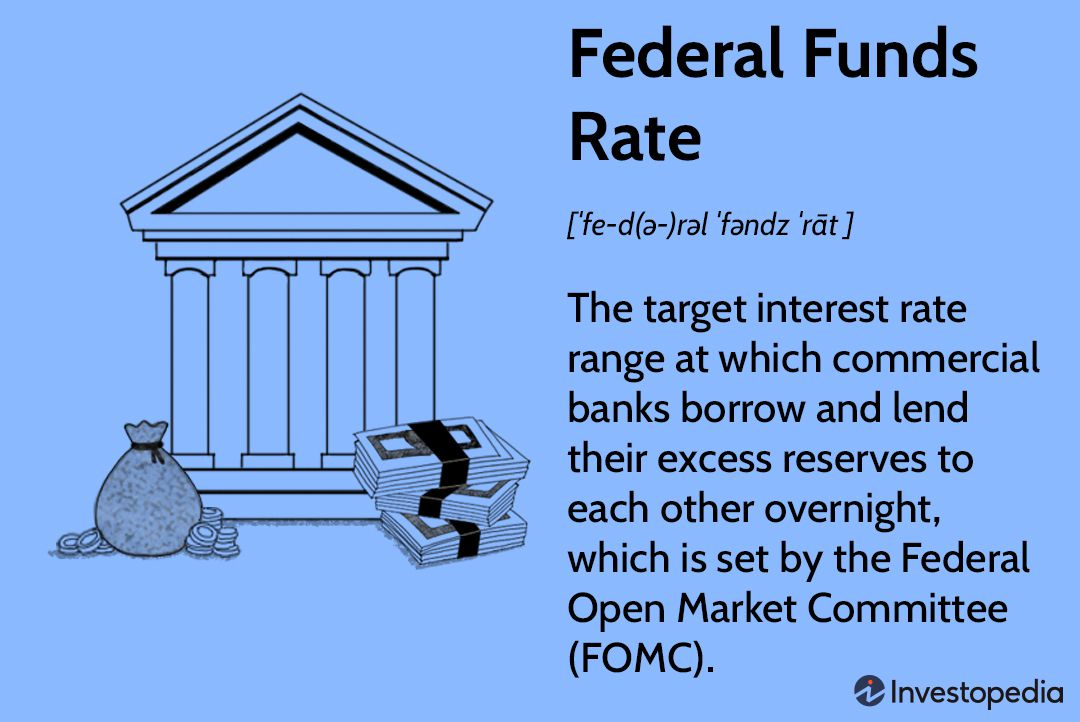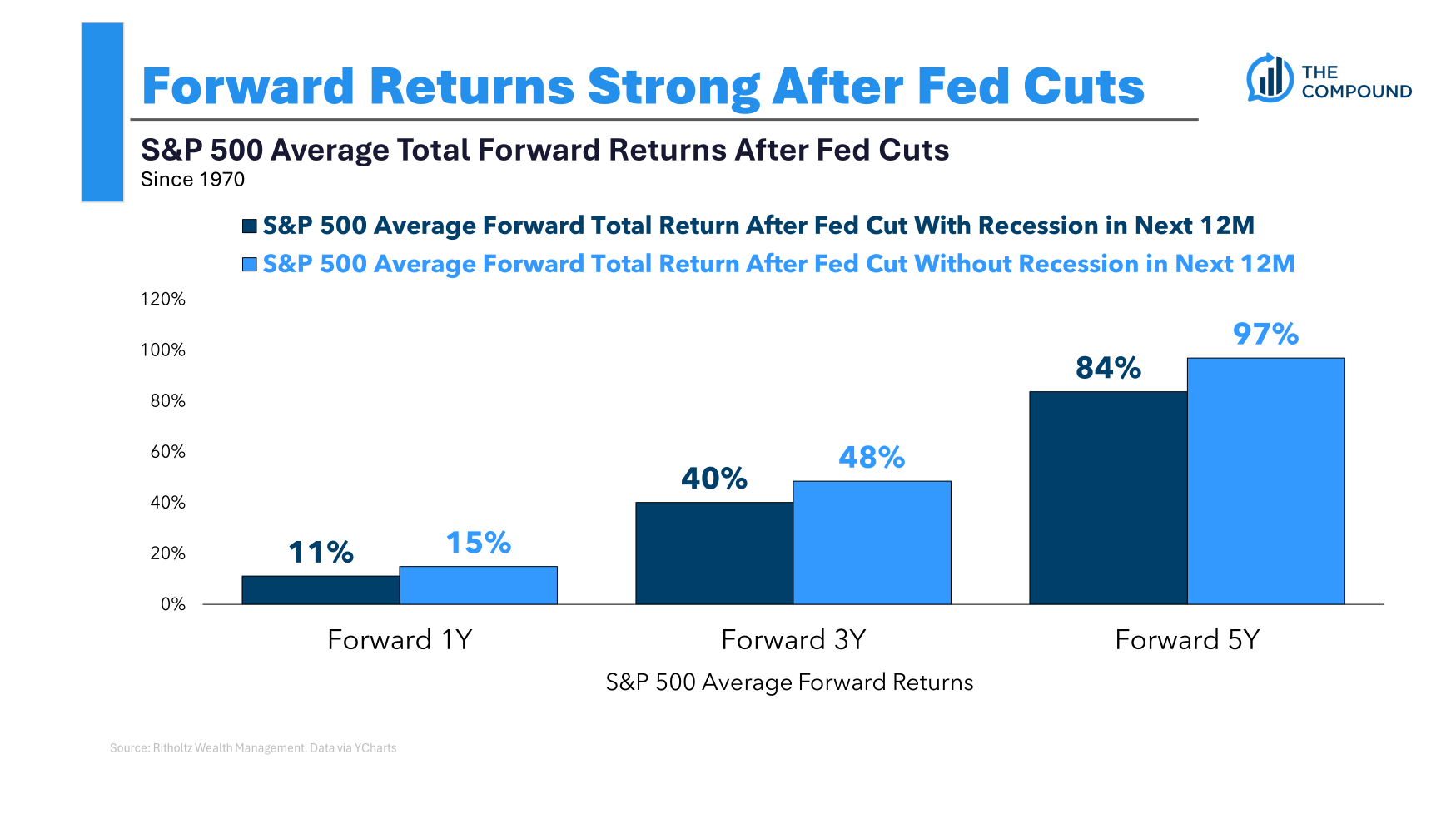How Do Federal Reserve Rate Cuts Impact Economic Stability?
A Federal Reserve rate cut, also known as a monetary policy easing, is when the central bank reduces the federal funds target rate. This action makes borrowing cheaper for banks and consumers alike, which can stimulate economic growth by increasing spending and investment.
However, cutting interest rates can have several negative consequences that might lead to an economic disaster or even a recession:

-
Signaling Economic Weakness: When the Fed cuts rates, it often signals to the market that the economy is slowing down or at risk of entering a recession. This perception can lead to increased financial volatility and decreased investor confidence.
-
Inflation Concerns: If inflation remains high despite low interest rates, it could indicate that monetary policy is not effectively controlling inflation. High inflation erodes purchasing power and reduces consumer spending, which can harm economic stability.
-
Financial System Vulnerabilities: High interest rates can contribute to vulnerabilities in the financial system. By lowering rates too aggressively, the Fed may exacerbate these vulnerabilities, potentially leading to a sudden eruption of financial risks.
-
Overheating Economy: If the economy is already close to full employment and the Fed still cuts rates, it could cause the economy to overheat. This scenario leads to higher inflation and may require future rate hikes to combat inflation, which could then trigger a recession.
-
Market Expectations vs. Reality: If market expectations about future rate cuts are not met, it can lead to disappointment and instability in financial markets. For instance, if the Fed announces a smaller rate cut than expected, it might disappoint investors and negatively impact stock prices.
-
Historical Precedents: In past instances, such as during the 2007-2008 financial crisis, the Fed had to cut rates aggressively to prevent a deeper recession. However, this approach also carried risks of further economic damage if not managed carefully.
-
Monetary Policy Lag: The effects of monetary policy changes take time to manifest in the economy. Cutting rates today might not immediately boost economic activity but could instead create uncertainty about future policy actions.
In summary, while cutting interest rates can be a tool to stimulate economic growth, it carries significant risks that could lead to economic instability if not implemented judiciously. The potential for an economic disaster or recession arises from signaling economic weakness, inflation concerns, financial system vulnerabilities, overheating economies, unmet market expectations, historical precedents, and the lagged effects of monetary policy actions.
What are the historical instances of Federal Reserve rate cuts leading to economic recessions?

The historical instances of Federal Reserve rate cuts leading to economic recessions include several notable periods:
-
2002-2003: The Federal Reserve, under Chairman Ben S. Bernanke, responded to fears of deflation by significantly lowering interest rates, reducing the federal funds rate to a record low of 1% by July 2003. This aggressive monetary policy led to an extreme liquidity cycle and another major demand bubble, contributing to an economic downturn.
-
1981-1982: During this period, the U.S. experienced a recession as part of a broader effort to combat high inflation. The Federal Reserve’s decision to lower reserve requirements was seen as dramatic because it was believed that such a shift would lead to lower inflation rates but also result in an economic downturn.
-
1929-1933: The Great Depression began with the stock market crash of 1924. The Federal Reserve implemented low-interest-rate policies and purchased large amounts of currency to maintain liquidity, which exacerbated bank failures and economic panic. Despite efforts to address the crisis through legislation like the Securities Act of 1932, the Fed’s monetary policy ultimately failed, leading to widespread bank failures, credit crises, and currency devaluation.
How does a decrease in interest rates affect consumer spending and investment behavior?
A decrease in interest rates can have significant effects on consumer spending and investment behavior, primarily through two mechanisms: the substitution effect and the income effect.
-
Substitution Effect: When interest rates fall, the returns on savings decrease. This makes saving less attractive compared to spending or investing in other assets that might offer higher returns. As a result, consumers are more likely to spend their money rather than save it, which increases overall consumption. Additionally, lower interest rates make borrowing cheaper, encouraging individuals to take out loans for large purchases such as houses or cars, further boosting consumption.
-
Income Effect: Lower interest rates also reduce the opportunity cost of spending today instead of saving for the future. With lower returns on savings, people may feel that they are missing out on potential earnings if they save rather than spend. This perceived loss of income from not saving can lead to increased current consumption.
Furthermore, lower interest rates can stimulate investment by making it cheaper for businesses and individuals to borrow money. This can lead to increased investment in capital goods, real estate, and financial assets. The reduced cost of borrowing can also encourage companies to expand their operations or invest in new projects, thereby increasing aggregate demand.
However, it’s important to note that the impact of interest rate cuts on consumption and investment can vary depending on other economic conditions and the specific reactions of consumers and businesses. For instance, if consumers expect future interest rates to rise again, they might delay consumption to avoid higher costs later. Additionally, the effectiveness of interest rate cuts in stimulating consumption and investment can be limited if the initial reduction in deposit rates is too small to significantly alter savings behavior.
In summary, a decrease in interest rates generally tends to increase consumer spending by making saving less attractive and borrowing cheaper, while also promoting investment by reducing the cost of capital for businesses and individuals.
What strategies can the Federal Reserve employ to mitigate the risks associated with rate cuts, such as signaling economic weakness or exacerbating inflation concerns?
To mitigate the risks associated with rate cuts, such as signaling economic weakness or exacerbating inflation concerns, the Federal Reserve can employ several strategies:
-
Gradual and Forward-Looking Policy Adjustments: The Fed can adopt a gradual approach to adjusting interest rates, similar to the “soft-landing” strategy used in the past. This involves raising short-term interest rates before actual economic downturns occur to contain nominal output growth and reduce inflation without causing a decline in real output.
-
Combining Strong and Symmetric Responses: The Fed should consider combining strong and symmetric responses to inflation and economic activity with elements to address the risks associated with the Effective Lower Bound (ELB). This means maintaining flexibility in policy responses to ensure price stability and limit economic volatility, thereby reducing losses from employment shortfalls.
-
Quantitative Easing and Long-Term Yield Management: To counteract potential中期美元 weakness due to expanded quantitative easing, the Fed could maintain long-term yield levels while expanding its quantitative easing operations. This approach helps stabilize financial markets and supports economic recovery.
-
Balancing Inflation and Employment Goals: The Fed should prioritize job creation over inflation control temporarily if necessary, especially during periods of high unemployment. However, this should be balanced with careful monitoring of inflation expectations to avoid long-term damage to the economy.
-
Transparency and Communication: Clear communication about future policy intentions can help manage market expectations and prevent misinterpretation of rate cut announcements as a sign of economic weakness. The Fed should avoid sending mixed signals that could confuse markets.
-
Monitoring Global Economic Conditions: Given the interconnectedness of global economies, the Fed should closely monitor international economic conditions and adjust policies accordingly. For instance, changes in global supply chains or external shocks like OPEC+ production decisions can impact domestic inflation targets and require相应调整 in monetary policy.
How do market expectations influence the effectiveness of Federal Reserve rate decisions?
Market expectations significantly influence the effectiveness of Federal Reserve rate decisions by shaping how financial markets react to these decisions and potentially altering the intended impact of monetary policy actions.
Firstly, market expectations can amplify or dampen the effects of Federal Reserve rate decisions. When investors anticipate a rate cut or increase, their reactions can either confirm or contradict the Fed’s intentions. For instance, if the market expects a rate cut but the Fed does not deliver it, this discrepancy can lead to volatility in financial markets such as stock prices and bond yields. Conversely, if the market aligns with the Fed’s actions, it can reinforce the desired economic outcomes more effectively.
Secondly, the formation of these expectations is influenced by various factors including past statements from Federal Reserve officials, economic indicators, and global economic conditions. Market participants use this information to make predictions about future interest rates and macroeconomic conditions, which in turn affect their investment decisions. This dynamic interaction between market expectations and actual policy decisions can sometimes result in what is known as “monetary policy surprises,” where the market’s reaction differs from what policymakers intended.
Moreover, the way the Federal Reserve communicates its policies also plays a crucial role in setting market expectations. The sentiment expressed in speeches and statements by Federal Reserve leaders can immediately influence market perceptions of upcoming policy decisions. Therefore, managing these expectations through clear communication is essential for the Fed to achieve its policy objectives smoothly.
Lastly, changing market expectations over time can alter the effectiveness of monetary policy tools like asset purchases. These changes reflect evolving views on how private securities holdings will behave under different economic scenarios, thereby affecting long-term interest rates and yield curves. By accounting for these shifting expectations, the Fed can better estimate and adjust its policies to meet its goals.
In summary, market expectations play a critical role in determining how Federal Reserve rate decisions are received and implemented within financial markets.
What are the long-term impacts of aggressive monetary policy easing on financial system stability?
The long-term impacts of aggressive monetary policy easing on financial system stability can be multifaceted and complex. According to , which is an empirical study based on data from 97 Chinese banks from 2009 to 2019, lower interest rates and increased volatility in monetary policy lead to higher risk-taking by banks. This effect is more pronounced in banks with larger asset sizes, lower capital adequacy ratios, and higher debt-to-asset ratios. The study also notes that monetary policy has heterogeneous effects across different economic and financial cycles, with its impact being stronger during periods of loose monetary conditions, credit expansion, and economic downturns compared to tight monetary conditions, credit contraction, and economic upswings.
Furthermore, from the Federal Reserve System discusses the theoretical mechanisms behind monetary policy’s impact on financial stability. It suggests that lower real interest rates can promote investment and entry into low-leverage financial institutions, potentially reducing financial fragility. However, it also highlights that when initial interest rates are already low, further reductions can encourage high-leverage financial institutions to take on more risk, thereby increasing financial fragility.
from the European Central Bank (ECB) emphasizes that prolonged extremely accommodative monetary policies enhance incentives for borrowing more and increasing financial leverage. This can disincentivize governments from undertaking structural reforms since borrowing becomes less costly. Additionally, persistent low or negative interest rates can induce a “liquidity trap,” where investors prefer short-term instruments over longer-term investments due to inadequate returns for higher risks.
In summary, while monetary policy easing can stimulate economic growth and reduce short-term financial instability, its long-term effects on financial system stability can be negative if not managed carefully. Excessive liquidity and low interest rates can lead to asset bubbles, increased leverage among financial institutions, and reduced incentives for structural reforms.
comments powered by Disqus